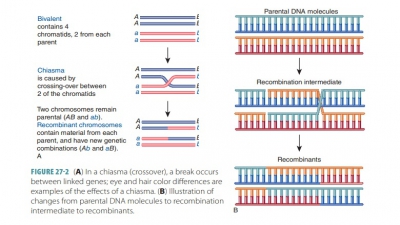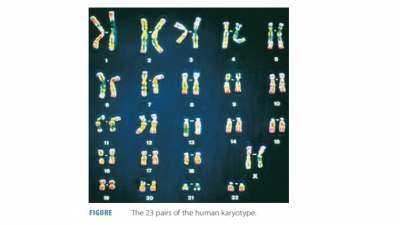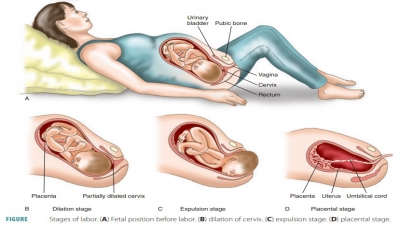Physical Chemistry
Pharmaceutical Chemistry: Physical Chemistry - Covers all topics with images and clear explanation. Study Pharmaceutical Chemistry: Physical Chemistry Online course, study material, important questions and answers, Notes, textbook.

BASIC CHEMISTRY
Chapter 1 : Gaseous State
=> Gaseous State
=> The Gas Laws
=> Boyle's Law: Pressure-Volume Relationship
=> Charles Law (Volume-temperature relationship)
=> Gay-Lussac's Law (Pressure-temperature relationship)
=> Avogadro's Hypothesis
=> Ideal gas equation
=> Mixture of gases - Dalton's law of partial pressures
=> Application of Dalton's law
=> Graham' s Law of Diffusion
=> Solved Example Problems: Dalton's law of partial pressures
=> Deviation from ideal gas behaviour
=> Compressibility factor Z
=> Compressibility factor for real gases
=> Van der Waals Equation
=> Pressure-Volume isotherms of Carbon dioxide
=> Derivation of critical constants from van der Waals constant
=> Liquefaction of gases
=> Summary: Gaseous State (Chemistry)
=> Evaluate Yourself: Gaseous State (Chemistry)
=> Choose the best Answer: Gaseous State (Chemistry)
=> Brief Questions and Answers: Gaseous State (Chemistry)
=> Solved Example Problems: Gaseous State (Chemistry)
Chapter 2 : Thermodynamics
=> Thermodynamics
=> Thermodynamics System and Surrounding
=> Types of Thermodynamic systems
=> Properties of the Thermodynamics System
=> Thermodynamic processes and its Types
=> Thermodynamics State functions, path functions
=> Internal Energy (U): Importance, Characteristics of Internal Energy
=> Thermodynamics: Heat(q) and Work(w)
=> Work involved in expansion and compression processes
=> Zeroth law of thermodynamics
=> First Law of Thermodynamics
=> Mathematical statement of the first law
=> Solved Example Problem: First Law of Thermodynamics
=> Enthalpy (H)
=> Relation between enthalpy 'H' and internal energy 'U'
=> Enthalpy Changes for Different Types of Reactions and Phase Transitions
=> Thermochemical Equations
=> Solved Example Problem: Thermochemical Equations
=> Measurement of δU and δH using Calorimetry
=> Measurement of δU using bomb calorimeter
=> Measurement of δH using coffee cup calorimeter
=> Applications of the heat of combustion
=> Hess's law of constant heat Summation
=> Lattice energy
=> Born - Haber cycle for determining the lattice enthalpy of NaCl
=> Second Law of thermodynamics
=> Need for the second law of thermodynamics
=> Various statements of the second law of thermodynamics
=> Solved Example Problem: Second Law of thermodynamics
=> Gibbs free energy (G)
=> Criteria for spontaneity of a process
=> Relationship between standard free energy change (δG0) and equilibrium constant (Keq)
=> Solved Example Problems: Gibbs free energy (G)
=> Third law of Thermodynamics
=> Summary: Thermodynamics(Chemistry)
=> Evaluate Yourself: Thermodynamics(Chemistry)
=> Choose the best answer: Thermodynamics
=> Brief Questions and Answers: Thermodynamics
=> Solved Example Problem: Thermodynamics(Chemistry)
Values
=> List of Fundamental constants in Chemistry
=> List of Critical constants of selected gases
=> List of Van der waals constants for select gases
=> List of Molar heat capacities of select compounds
=> List of Thermodynamic data for select compounds
Chapter 3 : Physical and Chemical Equilibrium
=> Physical and chemical equilibrium
=> Physical equilibrium
=> Equilibrium involving dissolution of solids or gases in liquids
=> Chemical Equilibrium
=> Dynamic nature of equilibrium
=> Homogeneous and heterogeneous equilibria
=> Law of mass action
=> Equilibrium constants (Kp and Kc)
=> Relation between Kp and Kc
=> Equilibrium constants for heterogeneous equilibrium
=> Application of equilibrium constant
=> Le-Chatelier's Principle
=> Van't Hoff Equation
=> How does oxygen exchanges between maternal and fetal blood in a pregnant women?
=> Summary - Chemistry: Physical and Chemical Equilibrium
=> Evaluate Yourself - Chemistry: Physical and Chemical Equilibrium
=> Choose the best answer: Chemistry: Physical and Chemical Equilibrium
=> Brief questions and answers: Physical and Chemical Equilibrium
=> Solved Example Problems: Physical and Chemical Equilibrium
Chapter 4 : Solutions
=> Solutions: Introduction
=> Types of solutions
=> Expressing concentration of solutions
=> Solubility of the solutes
=> Factors influencing the solubility of the solutes
=> Henry's law
=> Limitations of Henry's law
=> Why deep-sea divers use air diluted with helium gas in their air tanks?
=> Vapour pressure of liquid
=> Vapour pressure of liquid solutions
=> Vapour pressure of binary solution of liquid in liquids
=> Vapour pressure of binary solution of solids in liquids
=> Ideal and non-ideal solutions
=> Factors responsible for deviation of solution from Raoult's law
=> Colligative properties
=> Determination of molar mass weights from relative lowering of vapour pressure
=> Elevation of boiling point
=> Determination of molar mass of solute from depression in freezing point
=> Osmosis and osmotic pressure
=> Determination of molar mass from osmotic pressure
=> Significances of osmotic pressure over other colligative properties
=> Isotonic solutions
=> Reverse osmosis (RO)
=> Abnormal molar mass
=> Summary - Chemistry: Solutions
=> Evaluate Yourself: Chemistry: Solutions
=> Choose the best answer: Chemistry: Solutions
=> Brief questions and answers: Chemistry: Solutions
=> Solved Example Problems: Chemistry: Solutions
Chapter 5 : Chemical bonding
=> Chemical bonding: Introduction
=> Kossel - Lewis approach to chemical bonding
=> Types of chemical bonds
=> Covalent bonds
=> Representing a covalent bond - Lewis structure (Lewis dot structure)
=> Lewis structure for carbon dioxide
=> Lewis structures for exceptions to octet rule
=> Ionic or electrovalent bond
=> Coordinate covalent bond
=> Bond parameters
=> Bond length
=> Bond order
=> Bond angle
=> Bond enthalpy
=> Resonance - Chemical bonding
=> Polarity of Bonds
=> Valence Shell Electron Pair Repulsion (VSEPR) theory
=> Valence Bond Theory
=> Orbital Overlap
=> Formation of hydrogen Molecule
=> Types of hybridisation and geometry of molecules
=> Molecular orbital theory
=> Salient features of Molecular orbital theory
=> Linear combination of atomic orbitals
=> Bonding in some Homonuclear di-atomic molecules
=> Metallic bonding
=> Summary - Chemistry: Chemical bonding
=> Choose the best answer: Chemistry: Chemical bonding
=> Brief questions and answers: Chemistry: Chemical bonding
UNIT 6 : Coordination Chemistry
=> Coordination Chemistry
=> Coordination compounds and double salts
=> Werner's theory of coordination compounds
=> Definition of important terms pertaining to co-ordination compounds
=> Nomenclature of coordination compounds
=> Isomerism in coordination compounds
=> Theories of coordination compound
=> Valence Bond Theory
=> Crystal Field Theory
=> Stability of metal complexes
=> Importance and applications of coordination complexes
=> Coordination Chemistry: Summary
=> Coordination Chemistry: Choose the correct answer
=> Coordination Chemistry: Important Questions
UNIT 7 : Solid State
=> Solid State
=> General characteristics of solids
=> Classification of solids
=> Classification of crystalline solids
=> Crystal lattice and unit cell
=> Primitive and non-primitive unit cell
=> Number of atoms in a cubic unit cell
=> Calculation of unit cell dimensions and density
=> Packing in crystals
=> Imperfection in solids
=> Solid State: Summary
=> Solid State: Choose the best answer
=> Solid State: Important Questions
UNIT 8 : Chemical Kinetics
=> Chemical Kinetics
=> Rate of a chemical reaction
=> Molecularity
=> The integrated rate equation
=> Half life period of a reaction
=> Collision theory
=> Arrhenius equation - The effect of temperature on reaction rate
=> Factors affecting the reaction rate
=> Chemical Kinetics: Summary
=> Chemical Kinetics: Multiple choice questions with answers
=> Chemical Kinetics: Important Questions
=> Chemical Kinetics: Solved Example Problems



